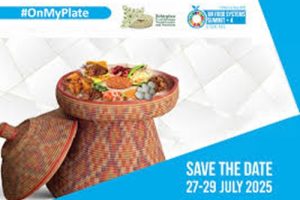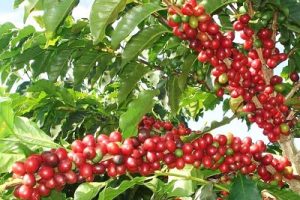BY ABEBE WOLDEGIORGIS
In Ethiopia, agriculture was practiced since time immemorial in which food plants and animals had been domesticated earlier than other countries in the world. Agricultural tools also had been fabricated locally by blacksmiths.
According to historical records, since ancient times the land holding system was feudal and tenants had been exploited heavily by landlords and almost two /thirds of the products were given to the landlords. In addition to this, when the harvesting time ended, farmers had been forced to provide coerced labor to the landlord’s personal home. The productive forces development was hampered by production as the result the sector remained stagnant for centuries.
Since the beginning of the modern era in the earlier time of the 20th century, governments tried their level best to modernize agriculture but the sector is still subsistence and rainfed and yet it is the mainstay of the nation’s economy.
Dr. Demis Chanallew is an agricultural economist and a private researcher. In his recently published paper, he explained that efforts had begun to improve the Ethiopian agriculture during the Emperor Menelik. In his reign, the emperor introduced modern housing construction and irrigation farms; to satisfy household fuel demand, the emperor imported eucalyptus trees from abroad, constructed railway transport and established the Ministry of Agriculture. It is believed that such efforts paved paths for obtaining new agricultural techniques and tools from abroad.
Later on, Emperor Hailesillaasie-I who continued ruling till 1974, exerted his energy to realize the preceding king dream. However, both kings due to lack of sufficient structure and human resource had faced various challenges which hampered their efforts. The establishment of agricultural colleges and secondary schools with the support of the USAID could somehow help to undo the problems.
In the later decades, agricultural projects implemented with the support of international non-governmental organizations allowed the sector to step forward. Among the projects implemented by the Ministry of Agriculture, Comprehensive Agricultural Package and Extension Program Implementation Department can be mentioned in this regard.
According to Demis, the project financed by the USAID and studied by Stanford Research Institute which comprised 7 main programs was implemented from 1967 to 1969. Nevertheless, the land tenure system prevailed then created havoc on the program not to be properly implemented and the outbreak of the 1974 revolution after a few years made the effort to remain in vain.
The Dergue regime which replaced the feudal regime made the nation indulge in political instability. The radical change which abolished the feudal landholding system was unique in Africa but did not free farmers from tenure insecurity. Because the socialist oriented ideology pursued by the Dergue gave monopoly ownership of land to the government. The era was characterized by prevalence of chronic famine, poverty and political uproar.
The downfall of the regime brought EPRDF to ascend to power. According to the agricultural researcher Desalegn Rahmato, the new regime preached to farmers that it assumed power for the sake of the wellbeing of farmers and prioritized rural development. Few years later after its power assumption, it announced that it pursued an Agricultural Development Led Industrialization program.
In addition, it announced its tentative agricultural programs known as Sustainable Development Plan and Poverty Reduction which were implemented from 2001 to 2005 and from 2006 to 2010 phase by phase.
The first Growth and Transformation plan (GTP I) from 2011 to 2015 and the second one from 2016 to 2020 are part of the above-mentioned development plan. After the announcement of the GTP program the government established the Agricultural Transformation Agency in 2011.
Based on the evaluation after the introduction of the first GTP, it was understood that rapid, broad based and inclusive economic growth was registered which enabled the reduction of the poverty level in 2014 from 38.7 to 23.4 in 2015. The GDP also grew by 10.1%. It was also learned that the contribution of agriculture to the GTP also reduced to 39%. Within the sector, the contribution of the crop sub sector was 27.4 and that of the livestock sub sector was 7.9 % and the rest was covered by the fishery sub sector.
According to the government evaluation, the reduction of the contribution of the agriculture sector to the GDP indicated that there was economic transition from agriculture to that of industry and service sectors. Nevertheless, some argued that even based on the multidimensional poverty reduction parameter, a significant number of the population were trapped in chronic poverty.
As to Demis, despite the government claiming that structural change was witnessed, agriculture is characterized by obsolete farming methods, rain fade which is common in various parts of the country. In the rural part of the country people are still barred from getting sufficient government services such as road transportation. Almost 90% of the rural population still utilizes biomass for household fuel purposes which in turn poses the clearance of vegetation cover and land degradation.
Therefore, it is fair to say that the outcome of the growth did not show the government ambition to achieve structural change manifested by transition from agricultural led economy to industry led economy. Moreover, both the manufacturing and service sectors did not reach the level replacing agriculture meaningfully.
Through the implementation of the GTP, even though some progress was achieved, almost 1/4th of citizens were not raised from poverty. The number of unemployed in the rural part of the country has increased. At the end of both GTPs, the agricultural sector remained in utilizing obsolete farming tools and the utilization of modern inputs was insignificant. Therefore, one can boldly say that the program did not achieve structural change.
The EPRDF regime in the last two decades tried its level best to implement various development programs by targeting poverty alleviation in the rural part of the country and achieved some progress particularly in crop productivity. Though some recessions were witnessed, the agriculture sub sector could achieve 4.1 % but due to the occurrence of extreme weather conditions frequently sustaining the growth faced challenges. Currently the government dedicates its time, finance and technology for enhancing agricultural production particularly in some selected areas through irrigation.
The winter season irrigation system for enhancing wheat production could be a typical example in this regard. Wheat production has brought tremendous results which can provide raw material for food industries such as biscuits, macaroni, and pasta and bread bakeries. It also advances the nation’s ambition to be food self- sufficient and moreover, it can serve as an import substitute. As to Demis, it is understood that Ethiopia till now spends significant amounts of hard currency for the importation of wheat and if it is substituted by local products, the money which is allocated for importation can be allocated for other development endeavors.
Currently the dry season irrigation wheat farm is practiced both in the law and highland parts of the country. Afar and Somali regions located in the arid zones of the north and eastern part of the country have vast areas of suitable land which can be used for wheat cultivation. The regions have sufficient amounts of river water used for irrigation farm and they are performing well and according reports the two regions could supply more than two million quit of wheat product to the market. Part of the Southern Nation and Nationalities region also agricultural land is located in the low land parts and the cultivation of wheat through irrigation is undergoing and expected to supply its products to the market. The Oromia and Amhara regions also have plenty of land which is cultivated by wheat farms both in the dry and wet seasons and played a pivotal role in meeting the wheat demand in the market.
Therefore, if the ongoing wheat irrigation farm is scale-upped and practiced by other crops, food self -sufficiency can be realized in the near future. The chance to transform the economy from agriculture to industrial one can be possible.
The Ethiopian Herald September 7/2022





